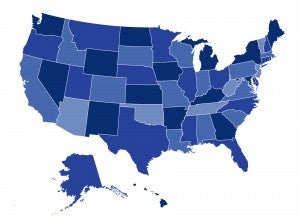
A few weeks ago the U.S. Department of Health and Human Services (HHS) generated front page headlines in the national news with a report on the prices hospitals charge for many common procedures. The startling finding from that report was that hospitals – some just blocks from each other – charge wildly disparate rates for the same procedure. For example, in Washington, DC, George Washington University Hospital charges $115,000 for a patient on a ventilator while Providence Hospital’s charge for the same event is less than $53,000. Las Colinas Medical Center in Dallas, Texas bills $160,832 for a lower joint replacement while Baylor Medical Center, just 5 miles away, bills $42,632. The huge range in prices bears no apparent resemblance to relative quality or even regional differences in labor and operating costs. More likely, hospitals set their prices as high as they can get away with, knowing that many payers – including Medicare and commercial insurers – will negotiate lower rates. This is consistent with the findings from a 2010 investigation by Massachusetts’ Attorney General, which found that price variation in a given market often has more to do with the market clout of a particular hospital than the quality of care or the sickness or complexity of the patients served.
Many in the hospital industry advised the public and policymakers to discount the HHS report because most payers negotiate lower rates. However, for those of us who track health insurance, the publication of these charges starts to raise the question of how effectively our commercial carriers negotiate on our behalf. Do they strike a tough bargain or do they simply pass on high and unjustifiable costs, which in the end must be borne by employers and consumers? Unfortunately, in most states it is almost impossible to figure that out, in part because providers insist that their reimbursement contracts include non-disclosure clauses, prohibiting insurers from publishing or otherwise disclosing their negotiated rates.
One state – Rhode Island – is tackling that problem. And it’s using, of all things, the state’s rate review authority to do so. The Office of the Health Insurance Commissioner (OHIC) last week issued a bulletin prohibiting the enforcement of non-disclosure clauses in insurers’ provider contracts. As I’ve observed before on CHIRblog, this is not the first time state insurance regulators have used their rate review authority to push beyond the traditional focus of whether the rates charged for a particular benefit package are “reasonable” and don’t impose an undue risk of solvency. For example, last year we documented Rhode Island’s efforts to hold insurers accountable for their efforts to improve primary care, support medical homes, standardize electronic medical records, and work towards comprehensive payment reform. Oregon and New York are eyeing similar efforts in their rate review programs.
Rhode Island’s OHIC concluded that the non-disclosure provisions in provider contracts were a significant impediment to the state’s broader efforts to improve the quality and efficiency of health care delivery. The bulletin notes that “the disclosure of…price variations is necessary to enable providers to make cost-effective clinical referrals, care coordination, and other treatment decisions.” The bulletin prohibits insurers from enforcing the non-disclosure provisions in their provider contracts, and promises to hold insurers accountable for this during the rate review process.
To be sure, Rhode Island’s insurers are proposing some pretty hefty premium increases for 2014, driven primarily (according to the insurers) by “escalating health care costs.” But over the long term, one hopes that shedding some sunshine on insurers’ negotiated rates will not only encourage some physicians to use more cost-efficient hospitals and refer their patients to more cost-efficient clinicians, but will also encourage insurers to drive a tougher bargain for the consumers and employers they serve – and who must ultimately pay the bills.

